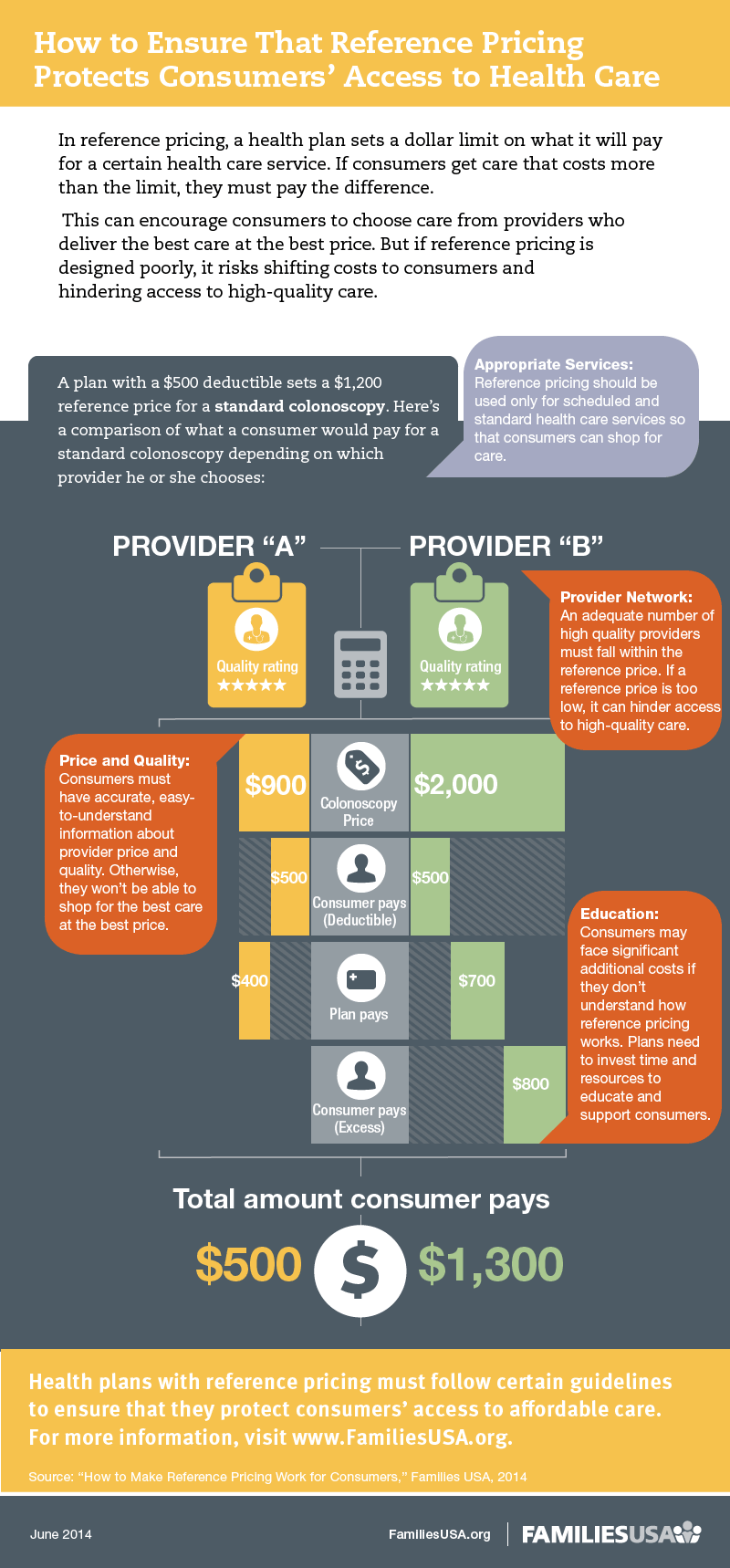How to Make Reference Pricing Work for Consumers
By Lydia Mitts,
06.24.2014
In today’s health care system, prices for medical care often vary greatly—even for the same service (e.g., a colonoscopy) from providers in the same network. And there is little to no correlation between this variation in price and the quality of the health care that patients receive. Moreover, consumers typically lack access to information on how much their health care actually costs. There is no way for consumers to make informed decisions based on quality and price when they choose a doctor for care. And for providers, there is little pressure to set fairer prices.
Reference pricing, if implemented with consumers’ best interests in mind, addresses these problems. In reference pricing programs, health care payers—like employers, state employee health plans, and private insurers—set price limits for health care services. If consumers choose to get care from providers who charge more than the reference price for that service, they pay the difference. However, as our brief, “How to Make Reference Pricing Work for Consumers” (PDF) explains, reference pricing programs must follow key guidelines to ensure that consumers have access to high-quality, affordable care and understandable, up-to-date price information.
This brief explains price variation and reference pricing, and it outlines eight key principles that reference pricing programs should follow to be effective and consumer-friendly. Our related infographic (below) shows how a consumer’s costs vary depending on the provider he or she chooses for a sample medical procedure that is subject to reference pricing.

